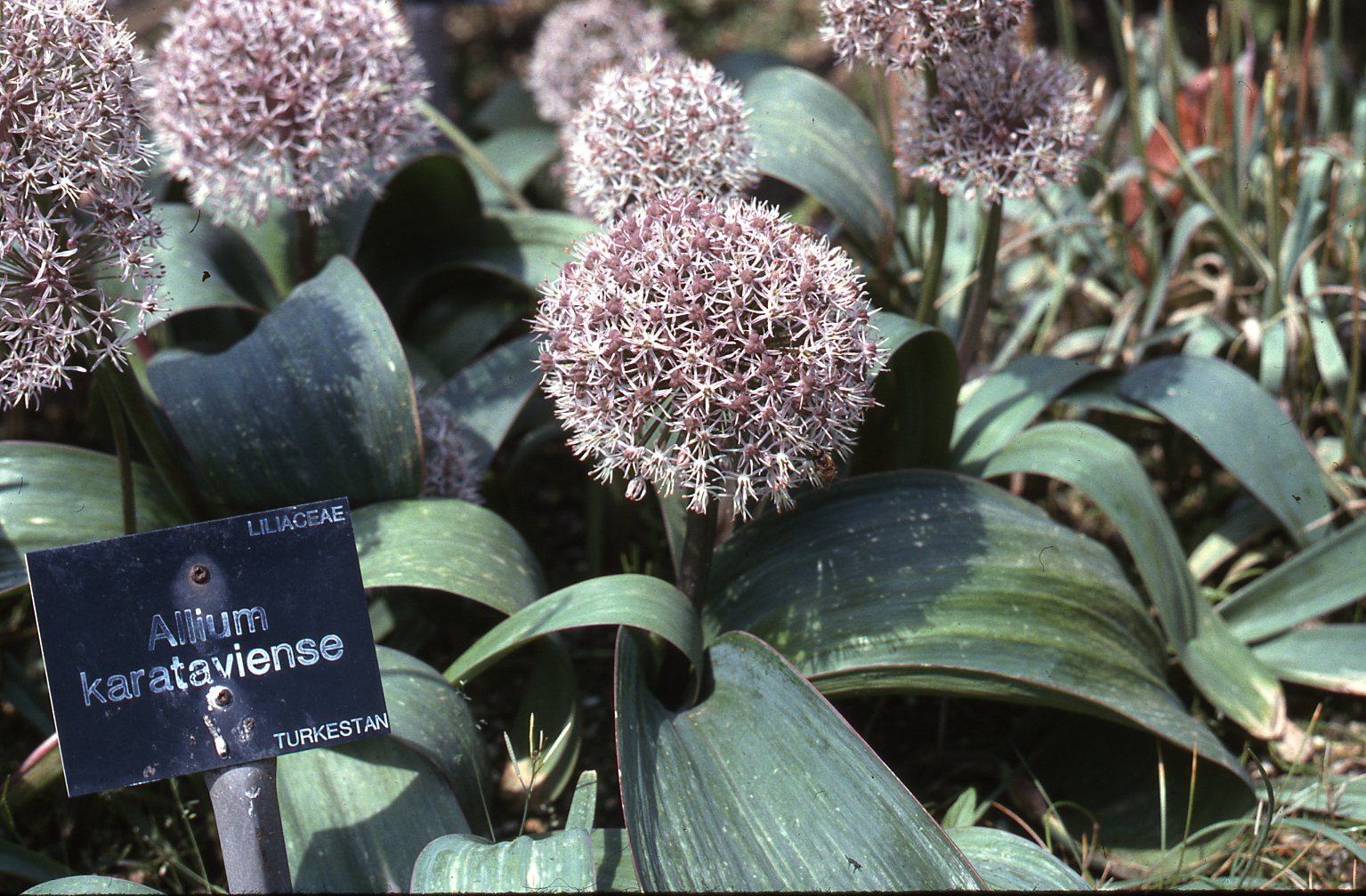Allium derderianum Regel: Red Data Book of Armenia

EN B 1 ab(iii) + 2 ab(iii)
Category. Endangered species. It is situated in the farthermost northern part of the main area of distribution. 4 sub–populations are known. The extent of occurrence and the area of occupancy are less than 500 km2. The species faces decline of the extent of occurrence and the area of occupancy caused by anthropogenic factor. It was included in the first edition of the Red Data Book of Armenia under Category 2: Rare species. A. woronowii was wrongly listed as a synonym of A. derderianum species. It is not included in the Annexes of CITES and that of the Bern Convention.
Description. Bulbous plant 6–12 cm. Leaves 2–3(4), (1)2–5 cm broad, oblong–elliptic, suddenly narrowed in short cucullate apicule. Inflorescence hemispherical or broadly fasciculate, many–flowered. Perianth stellate– or inffundibular–campanulate; segments (elliptic–) linear, whitish or lilac–pink; midrib purple–violet. Ornamental plant.
Distribution. In Armenia it is found in Zangezur floristic region: Bargushat mountain range, (Kaputdjugh, Khustup, Baghatssar). EOO is 400 km2, AOO is 16 km2, the number of locations is 4. Besides Armenia it grows in Nakhichevan (Soyukh Mountain), North and West Iran.
Ecological, biological and phytocoenological peculiarities. Grows in the alpine mountain belt, at the altitudes of 2700–3400 meters above sea level, in rocky and stony slopes, on screes. Flowering from June to July, fruiting from July to August.
Limiting factors. Restricted extent of occurrence and area of occupancy, loss/degradation of habitats caused by anthropogenic factor and global climate change.
Conservation actions. No conservation actions. Necessary: monitoring of the population state.
Suggestions
 The Ministry of Environment sent a letter international partners to draw their attention to the real danger of environmental disasters as a result of Azerbaijan's large-scale aggression towards the territory of Armenia
The Ministry of Environment sent a letter international partners to draw their attention to the real danger of environmental disasters as a result of Azerbaijan's large-scale aggression towards the territory of Armenia
 Vicia pisiformis: Red Data Book of Armenia
Vicia pisiformis: Red Data Book of Armenia
 Vavilovia formosa: Red Data Book of Armenia
Vavilovia formosa: Red Data Book of Armenia
 Trigonella capitata: Red Data Book of Armenia
Trigonella capitata: Red Data Book of Armenia
 Trigonella astroides: Red Data Book of Armenia
Trigonella astroides: Red Data Book of Armenia












